Answer these simple questions and we will find you the BEST prices
Which type of solar quotes do you need?
It only takes 30 seconds
100% free with no obligation

Get Free quotes from insulation specialists near you

Save money by comparing quotes and choosing the most competitive offer

The service is 100% free and with no obligation
- GreenMatch
- Insulation
- Roof Insulation
- Best Roof Insulation
Best Roof Insulation: A Complete Guide to Roof Insulation Types

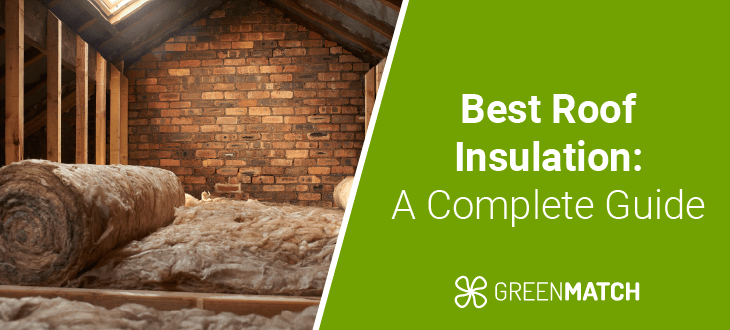
- About 21 million homes in the UK have outdated or insufficient insulation, causing significant heating challenges for 41% of UK adults.
- To find the best roof insulation, you must consider your roof type, your budget, and whether the loft space will be used for storage or as a living space.
- Proper roof insulation can save up to £230 annually on energy bills and reduce the carbon footprint by 0.6 tonnes.
- The most cost-effective roof insulation is fibreglass at £10 per m2. It is suitable for roof rafter insulation and cold and warm insulation for pitched roofs.
- Sheep wool and cellulose roof insulation are the most eco-friendly options available.
About 21 million homes in the UK have outdated or insufficient insulation, causing 41% of UK adults to struggle with heating their homes due to poor insulation and high living expenses. Uninsulated roofs can account for one-quarter of heat loss in your home, making roof insulation crucial.
Insulation for your roof can improve your home’s energy efficiency and help you save up to £230 annually on energy bills. Additionally you can potentially reduce your carbon footprint by 0.6 tonnes. Nonetheless, selecting the right roof insulation can be overwhelming. With various insulation types available, each with unique benefits and installation methods, it can be challenging to determine the best option for your specific requirements.
This comprehensive guide will explore the most effective roof insulation materials, including traditional options like fibreglass and cellulose and modern solutions like spray foam. By grasping the advantages and disadvantages of each type, you can make well-informed decisions to ensure that your home stays well-insulated, comfortable, and energy-efficient all year round.
Once you've found the perfect roof insulation, comparing quotes from various roof contractors is crucial to ensure you secure the best deals that fit your needs and budget. However, sifting through multiple quotes can take time and effort.
GreenMatch can provide you with up to four free, non-binding quotes from trusted local installers. Complete a quick 30-second form using the link below. Click now to receive your quotes with no obligations and no hidden fees.
- Describe your needs
- Get free quotes
- Choose the best offer
It only takes 30 seconds



What is the best roof insulation?
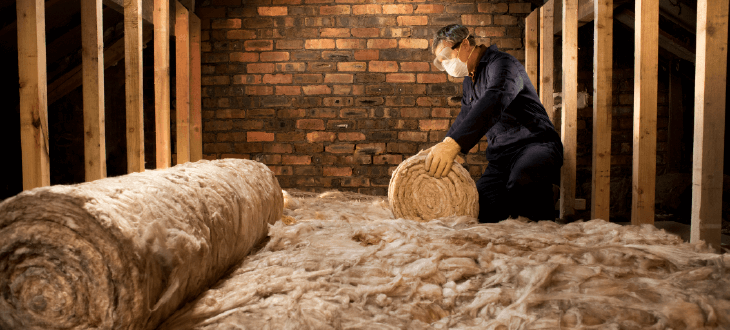
Choosing the best insulation for your roof is a critical decision that requires careful consideration of various factors. These include the type of roof, budget, roof structure, and the depth of the rafters. Consider whether the loft will be used for storage or living space, as this significantly influences the decision
There are several types of roof insulation, each suited to different structures and compatible with flat or pitched roofs, as well as warm or cold loft insulation. For example, fibreglass batt insulation is popular for standard rafter spacing due to its affordability and easy installation.
Spray foam insulation is ideal for complex roof structures as it offers excellent thermal resistance and effectively fills gaps. Rigid foam insulation works well in spaces with limited rafter depth due to its high R-value per inch.
Cellulose insulation, made from recycled paper products, can be blown into roof cavities for good coverage. Mineral wool insulation provides excellent fire resistance and soundproofing, making it a durable choice for increased safety.
It's important to remember that what works for one roof may not be the best option for another. Factors such as roof design, climate, and specific insulation requirements must be carefully considered to find the optimal solution. Sustainability is also a crucial consideration.
Some insulation materials, like cellulose and mineral wool, are more environmentally friendly. In contrast, others, such as certain types of foam, are less sustainable. Therefore, selecting the best insulation for your loft involves thoroughly evaluating these factors to ensure the best fit for your unique situation.
Best roof insulation for flat roofs
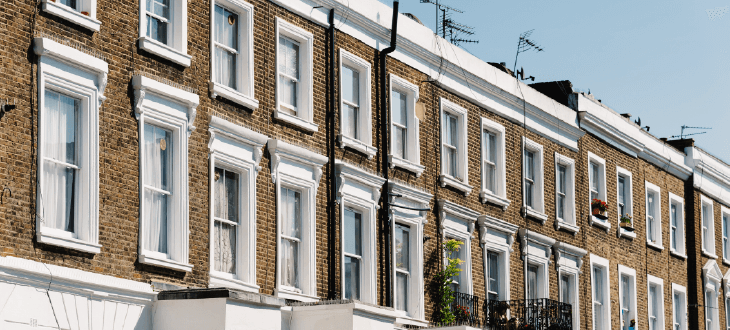
When choosing the best insulation for flat roofs, it's important to consider materials that offer strong thermal performance, moisture resistance, and durability due to the unique challenges of flat surfaces.
The structure of a flat roof will significantly influence the insulation materials you can choose from. Flat roofs, unlike pitched roofs, have minimal slopes, which create unique challenges:
- Water drainage: Flat roofs do not naturally shed water as efficiently as pitched roofs, which can lead to water pooling. Therefore, roof insulation should be highly moisture-resistant and can support a waterproof membrane.
- Thermal performance: Flat roofs are often exposed to direct sunlight and can absorb more heat, making thermal efficiency a critical consideration. Materials with higher R-values are preferred to reduce heat transfer and maintain consistent indoor temperatures.
- Weight considerations: The weight of the insulation material used can impact the structural integrity of flat roofs. Lightweight materials are often favoured to avoid stressing the building structure excessively.
It is important to consider these factors when looking at flat roof insulation. Below we have provided the best roof insulation for flat roofs:
Polyisocyanurate (PIR) board
PIR boards are made from plastic foam, a popular choice because of its high R-value per inch, ranging from 5.6 to 7.0, providing excellent thermal resistance. Additionally, it produces less waste during production, making it an eco-friendly option for flat roofs.
These lightweight boards are easy to install and are compatible with a wide range of cladding and roofing materials, including metal roof insulation, brick, stone, wood, vinyl, and asphalt shingles. Securely attach PIR boards using adhesives or mechanical fasteners. Additionally, PIR offers fire-resistant properties and minimal environmental impact compared to other rigid board insulations.
It's important to note that while PIR boards can be relatively expensive, typically costing around £12.50 per square metre, they have lower resistance to water absorption. When exposed to wet conditions, these boards are likely to absorb up to 3% of their weight in water, which can reduce their R-value. This reduction in R-value can lead to mould growth and rot, especially in flat roofs where water can accumulate. Therefore, insulation needs to be water-resistant. Additionally, the R-value of PIR boards decreases in colder climates.
- High R-value
- Lightweight
- Easy to install
- Cost-effective
- Produces less waste when made
- Susceptible to water absorption
- R-value decreases in colder climates
- Mould and rot can occur
Extruded Polystyrene (XPS)
XPS is a durable thermoplastic foam produced by extruding polystyrene and a blowing agent through a die. It has a high R-value ranging from 5 to 6, depending on the product and environmental conditions, making it highly efficient for thermal insulation.
XPS has robust compressive strength and minimal water absorption—less than 1%—which preserves its structural integrity and thermal properties, even in damp climates. This makes it versatile for warm and cold decking insulation on flat roofs. XPS uses fossil fuels in its production and is non-biodegradable, making it less sustainable and eco-friendly than other insulation materials.
In addition, the cost of roof insulation with this material is much higher, at around £21.50 per square metre. It also offers less fire resistance than PIR, restricting its use with specific roofing materials such as asphalt shingles or those requiring torch-down techniques. When subjected to high temperatures, XPS can melt and drip, potentially spreading fire and emitting toxic fumes, which poses additional risks during fires.
- Durable and strong
- Moisture resistant
- High R-value
- High cost
- Flammable
- Not sustainable
Expanded Polystyrene (EPS)
EPS is the most cost-effective insulation material for flat roofs, averaging around £10 per metre. It's an excellent option for those seeking budget-friendly flat roof insulation. EPS is a thermoplastic foam with a consistent R-value of 4 to 4.5. It comes in various thicknesses, and you can cut it to fit your roof's dimensions, making installation easy.
EPS is not eco-friendly because it derives from petroleum, a non-renewable resource, and does not biodegrade, leading to long-term environmental accumulation. When burned, EPS can release harmful chemicals. Nevertheless, it is lightweight and has lower manufacturing energy requirements than other materials, providing some ecological benefits.
Additionally, EPS is incompatible with specific cladding and roofing materials, such as asphalt shingles, hot mop, or torch-down roofs, which can damage it due to high temperatures and solvents. An additional protective coat or layer is necessary to prevent damage. EPS is not as fire-resistant as PIR insulation and can melt and drip during extreme temperatures, potentially spreading fire and creating toxic fumes.
- Cheapest flat roof material
- Consistent R-value
- Easy to install
- Various thickness available
- Low R-value compare to PIR and XPS boards
- Flammable
- Not eco-friendly
- Not suitable to some cladding and roofing material
Best roof insulation for pitched roofs
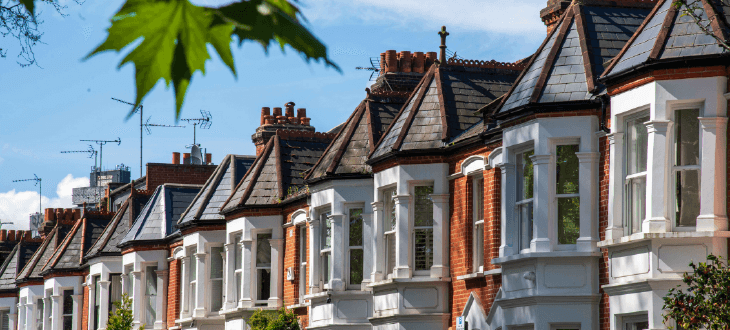
For pitched roofs, the choice of insulation depends on factors such as thermal performance, ease of installation, and the specific use of the space under the roof, such as whether it will be a living area. The shape and structure of pitched roofs significantly influence the choice of insulation material. Pitched roofs, characterised by their sloping sides, present unique challenges and opportunities for insulation:
- Complex structure: The angles and slopes of pitched roofs mean that not all insulation materials are suitable or easy to install. Materials need to conform to the roof's shape, limiting choices to flexible or easily customisable options like batts, blankets, or spray foam that can effectively fill irregular spaces, including eaves insulation.
- Ventilation needs: Proper ventilation is crucial in pitched roofs to prevent moisture accumulation that can lead to mould and rot. Insulation materials and installation techniques must ensure air can flow adequately between the insulation and the roof surface.
- Thermal bridging: The rafters in pitched roofs can often act as thermal bridges, allowing heat to bypass the insulation. Materials with higher R-values are preferred to combat this effect, as they provide better thermal resistance.
- Space for insulation: Unlike flat roofs, pitched roofs often have an attic or loft space underneath, which can be used for either cold or warm insulation approaches. This space allows for thicker layers of insulation without compromising interior room headspace, which is beneficial for thermal efficiency.
Understanding the difference between cold and warm insulation types is crucial, as each method suits different requirements and affects the choice of material. Below, we will detail cold and warm roof insulation and the best roof insulation materials for these types of roofs.
Cold roof insulation for pitched roofs
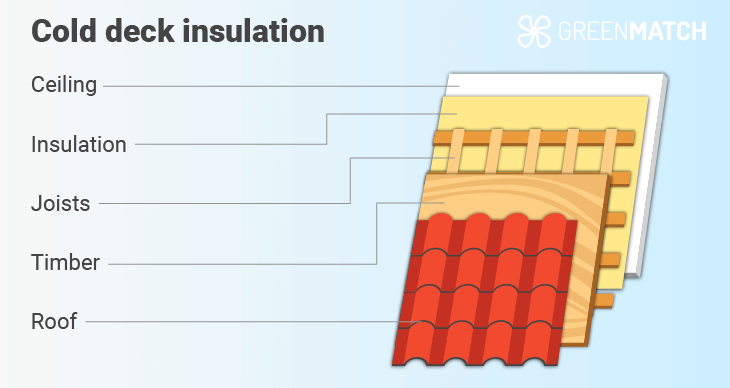
Insulating sloped roofs with cold roof insulation is a cost-effective solution. It involves placing insulation between the ceiling joists, leaving the attic space unheated and cooler.
We recommend this method for attics used as storage rather than living spaces. It's also possible to add cold insulation between attic joists. While this approach is budget-friendly, it is crucial to maintain adequate ventilation in the attic space to prevent issues with condensation and dampness. Below are the best roof insulation for cold, pitched roofs:
Fibreglass
Fibreglass is a common and cost-effective insulation material for cold lofts, typically made of 40-60% recycled materials. Used for different applications, such as standard terrace homes, bungalows and even log cabin insulation, fibreglass is versatile and cheap and the best insulation material for cold roof insulation. It comes in rolls or batts and the cost of this insulation is around £10 per square metre. However, it can hold onto water and moisture, lowering its ability to block heat transfer and leading to mould and mildew growth. On average its R-value is between 3 to 4 per inch. Wear protective gear during installation to avoid skin and lung irritation from tiny glass fibres.
- Non-combustible
- Easy to install
- Cheapest insulation material available
- Eco-friendly
- Can irritate skin and respiratory system during installation
- Require protective gear for handling
- Moisture sensitivity
- Mould and mildew can grow
Cellulose
Cellulose insulation is made from recycled paper and easy to install using specialised equipment. It is eco-friendly, cost-effective, and fire-resistant. Its R-value is between 3.1 and 3.8 per inch. However, it can absorb moisture over time, reducing efficiency and requiring a vapour barrier. Installation can also generate dust, necessitating a protective mask, although it poses fewer health risks than fibreglass.
- Cost-effective
- Eco-friendly
- Easy to install
- Fire-resistant
- Low R-value
- Moisture sensitivity
- Specialised equipment required
- Dust generated during installation
Sheep wool
Sheep wool insulation is ideal for pitched roofs due to its excellent thermal and acoustic properties. It provides continuous insulation, has an R-value of 3.5 to 3.8 per inch, and can absorb up to 30% of its weight in water without compromising insulation. This is considered the most eco-friendly material available, however it is more expensive than other insulation costing around £19.75 per m2. Additionally it is fire-resistant and easy to install but susceptible to pests due to its organic nature.
- Most eco-friendly insulation material available
- Fire-resistant
- Moisture regulation
- Easy to install
- Expensive
- Lower R-value than other insulation materials
- Susceptible to pests due to the organic material
Warm roof insulation for pitched roofs
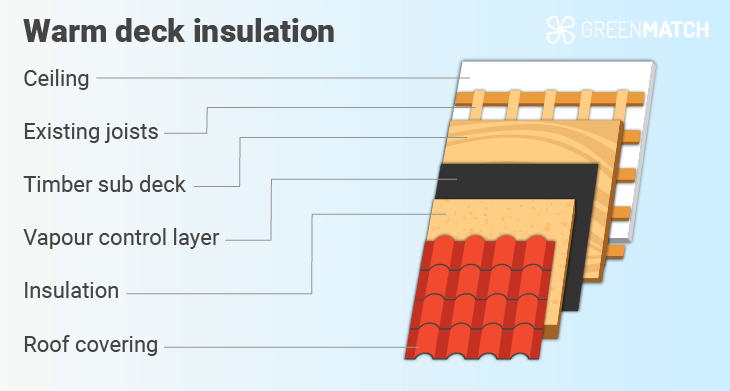
When insulating a pitched roof using the warm roof method, the goal is to create a continuous thermal barrier directly under the roof, keeping the entire roof space warm. Warm insulation is applied under the roof covering, directly on the rafters, creating a warm, insulated envelope that includes the roof space. We recommend this method for attics used for living spaces. Below are the best roof insulation materials for the warm roof method.
Rigid foam boards
Rigid foam boards such as PIR, XPS or EPS are one of the best roof insulation materials for this insulation method. They offer excellent thermal efficiency, warming the entire loft and are easy to install in difficult roof areas.. As mentioned above we have listed all pros and cons of PIR, XPS and EPS insulation material.
Spray foam insulation
Spray foam insulation is an excellent option for insulating warm rooms in pitched roofs. When applied as a liquid, it fills an entire cavity, creating an airtight seal that is particularly effective for irregular or hard-to-reach spaces. However, it requires specialised equipment and protective gear, as the foam can irritate the skin and respiratory system. The insulation costs are relatively high, ranging from £55 to £70 per square metre depending on the open or closed-cell foam chosen. Additionally, the R-value ranges from 3.6 to 7 per inch, depending on the type of spray foam used.
It's important to note that spray foam insulation is not environmentally friendly due to the chemicals used in its production. Despite its high cost, spray foam can last up to 100 years, saving future costs and reducing waste.
- Can have a high R-value depending on type of spray foam chosen
- Airtight
- Easy to install with irregular roof shape and structure
- Long lifespan
- Expensive
- Not eco-friendly
- Harmful to skin and respiratory system
- Specialised equipment required for installation
Best roof insulation for roof rafters
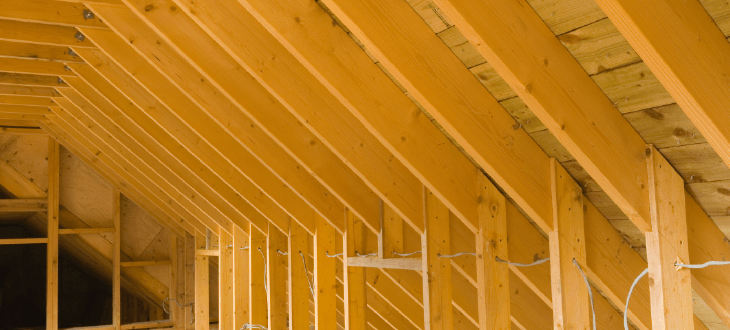
Place insulation material between or over the sloped structural beams (rafters) to insulate the roof. Creating a thermal barrier, roof rafter insulation keeps interiors warm in winter and cool in summer, benefiting living spaces. Below are the top three best roof insulations for roof rafters:
- Rigid foam boards: These boards, including polyisocyanurate (PIR) and extruded polystyrene (XPS), offer high R-values, providing excellent thermal resistance. They can range between £10 to £21.50 per m2 depending on the type of rigid foam boards you choose. It is perfect for roof rafter insulation as they are durable, meaning they can withstand heavy weight without cracking. Additionally, cut them into shapes to fit between the roof rafters for easy installation.
- Fibreglass: This is the best roof insulation material for the budget-conscious. It is affordable and will cost around £10 per m2. Its lightweight batts or rolls are ideal for roof rafter insulation and can be cut to fit between the rafters.
- Sheep wool insulation: This material is perfect for those of you looking to further reduce your carbon footprint. People consider it the most eco-friendly and sustainable roof insulation material available. Due to its flexibility and resilience, it is particularly suitable for roof rafters and is easy to install. Additionally, it has natural thermal performance, moisture regulation, acoustic insulation, and fire resistance. These attributes make it an excellent choice for eco-conscious homeowners looking for an effective and sustainable insulation solution for their roofs.
Collaborating with an expert is crucial to ensuring you choose the perfect insulation for your roof. Professional guidance is indispensable for prioritising eco-friendly, cost-effective, or high-thermal performance options.
Complete our 30-second form to connect with local, trusted roof insulation installers. You'll receive up to four free, non-binding quotes without hidden costs or obligations.
- Describe your needs
- Get free quotes
- Choose the best offer
It only takes 30 seconds



FAQ
The best insulation for a roof depends on various factors such as the roof type, budget, and desired thermal performance.
The best insulation for roof rafters in the UK includes rigid foam boards like PIR or XPS, known for their high thermal efficiency and moisture resistance. Fibreglass is the best insulation due to its affordability and ease of installation. Additionally, sheep wool insulation is highly regarded for its excellent thermal and acoustic properties, eco-friendliness, and ability to fit snugly between rafters.
The best insulation for a cold roof typically includes fibreglass batts or rolls, which are cost-effective and easy to install.

Caoimhe is an experienced content writer and researcher who is passionate about providing accessible information to every reader. With a background in English literature and Sociology, she combines the two disciplines to create cohesive, well-thought-out, and well-informed pieces.
We strive to connect our customers with the right product and supplier. Would you like to be part of GreenMatch?

